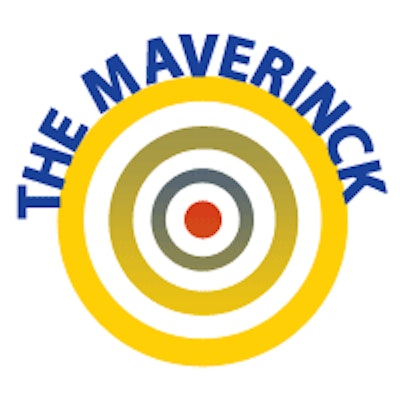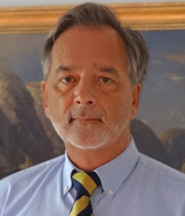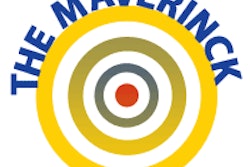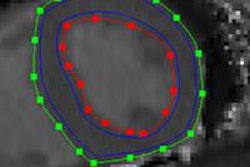
Earlier this year I wrote an article about some cardiologists' scientific shortcomings in imaging science. I happened to write it after I had seen and read a number of papers dealing with rough estimations of relaxation times of the myocardium. The experiments, methods, and results described had gone out of date years ago; even dressed in new clothes they are inadequate and deficient in precision and accuracy.1
 Dr. Peter Rinck, PhD, is a professor of diagnostic imaging and the president of the Council of the Round Table Foundation (TRTF) and European Magnetic Resonance Forum (EMRF).
Dr. Peter Rinck, PhD, is a professor of diagnostic imaging and the president of the Council of the Round Table Foundation (TRTF) and European Magnetic Resonance Forum (EMRF).I know that I laid it on a little thick to make the point, as I often do. It's part of these columns -- for instance, to pinpoint scientific or ethical blunder. Some days after publication, I got a response from a good friend of mine, a well-known cardiologist, who politely pointed out:
Your negative attitude can be of some help. However, I guess that there are some bright spots in the darkness you describe ... Isn't the fact that T1 mapping is not the real T1 of the tissue unknown also to the majority of radiologists? I guess yes.
Cardiologists and me personally are tempted to use T1 mapping with the hope to repeat the spectacular results obtained by T2* for measuring cardiac iron overload, which is, so far, one of the most useful approaches of modern cardiac medicine (several thousands of patients are probably surviving due to this quite rough measurement). In other words, to be imprecise does not preclude specific use.
By the way, I guess this would have to be applied to the vast majority of medical papers.
He made me think, and I believe that he is correct in what he says. Thus, at this point, I make a formal apology to my friend, the cardiologist, and all cardiologists. Yet, I still don't believe that their methods are scientifically solid -- a charge he seems to accept.
Ignorance in matters concerning MRI was, for instance, revealed in a paper by Dan Ma published in Nature2 in 2013 -- including a telling mistake.
The cardiologists invented a new relaxation time T1*, whereas the paper in Nature cites a newly coined radiological relaxation time T-star 2 which should read T2-star, T2*. The term was first used by Warntjes some years earlier.3 Nobody seems to have realized this mistake and it multiplies in "scientific" copy-and-paste papers.
Ma proposes a method called "magnetic resonance fingerprinting." The only true novelty was the acronym: MRF; there are hundreds, perhaps thousands of papers dealing with this issue, and the EU supported numerous research activities on the topic. As for the methods: they have been described decades ago; and rejected. We called it "the holy grail of MR imaging;" Ma describes it as a "robust, fully quantitative multiparametric acquisition [that] has long been the goal of research in MR."
The resurrection of multiparametric MR imaging and the MR fingerprint were announced with the same words in an ECR statement written by Siegfried Trattnig representing the European Society of Radiology (ESR) Subcommittee on Imaging Biomarkers.4 They summarized their claims in the following key points:
- MR fingerprinting (MRF) is a new approach to data acquisition, postprocessing and visualization.
- MRF provides highly accurate quantitative maps of T1, T2, proton density, and diffusion.
- MRF may offer multiparametric imaging with high reproducibility, and high potential for multicenter/multivendor studies.
A peer reviewer would have rejected this "statement" immediately: it is not a new approach, even not a new name, only a new acronym; and as for accuracy and reproducibility, the authors should come up with a proof of concept: statistics, look at the influence of noise, and reproducibility on the same patient in the same conditions. I am sure it is impossible to extract stable and robust parameters from those kind of multifunctional data because we and others have tried more than 30 years ago, with more robust methods than today and, when this didn't work, with multispectral analyses.5
When you reinvent the wheel, always consider the flat tire problem. The cardiologists are not to blame for their limited knowledge of magnetic resonance basics. However, I expect that the leaders of specialized magnetic resonance centers would know. I also understand that one of their major worries in managing such a center is to get money to run the institute, sometimes whatever it costs -- in this case scientific credibility.
On the other hand, as so often is the case, the entire procedure and its possible consequences has not been thought through. Quantified data will gain legal status, even if they are woolly. Lawyers will grab these numbers and start suing, as they did with data from diffusion tensor imaging6 -- because they will find out that patients were not treated according to the "robust, fully quantitative multiparametric data." Thus, a little more humility regarding such data would be fitting before propagating "fingerprinting."
Or, as Giovanni Guareschi's protagonist Don Camillo once said: "It is too much knowledge which leads to ignorance, because from a certain moment on people only see the calculable part of things. And the harmony of numbers becomes their god."7
Dr. Peter Rinck, PhD, is a professor of diagnostic imaging and the president of the Council of the Round Table Foundation (TRTF) and European Magnetic Resonance Forum (EMRF).
References
- Rinck PA. Relaxation times blues. Rinckside. 1991;2(1):5-7. http://www.rinckside.org/Rinckside Columns/1991 03 Relaxation times blues.htm.
- Ma D, Gulani V, Seiberlich N, et al. Magnetic resonance fingerprinting. Nature. 2013;495(7440):187-192.
- Warntjes JB, Dahlqvist O, Lundberg P. Novel method for rapid, simultaneous T1, T*2, and proton density quantification. Magn Reson Med. 2007;57(3):528-537.
- European Society of Radiology. Magnetic Resonance Fingerprinting -- a promising new approach to obtain standardized imaging biomarkers from MRI. Insights Imaging. 2015;6(2):163-165.
- Rinck PA. Quantification of MR parameters. In: Magnetic Resonance in Medicine. The Basic Textbook of the European Magnetic Resonance Forum. 8th ed. 2014. http://magnetic-resonance.org/ch/15-02.html#15-04.
- Wortzel HS, Tsiouris AJ, Filippi CG. The potential for medicolegal abuse: Diffusion tensor imaging in traumatic brain injury. AJOB Neuroscience. 2014;5(2):9-15.
- Guareschi G. Mondo Piccolo, Don Camillo. Milan, Italy: Rizzoli; 1948. The Little World of Don Camillo. New York, NY: Pellegrini and Cudahy; 1950.
The comments and observations expressed herein do not necessarily reflect the opinions of AuntMinnieEurope.com, nor should they be construed as an endorsement or admonishment of any particular vendor, analyst, industry consultant, or consulting group.



















